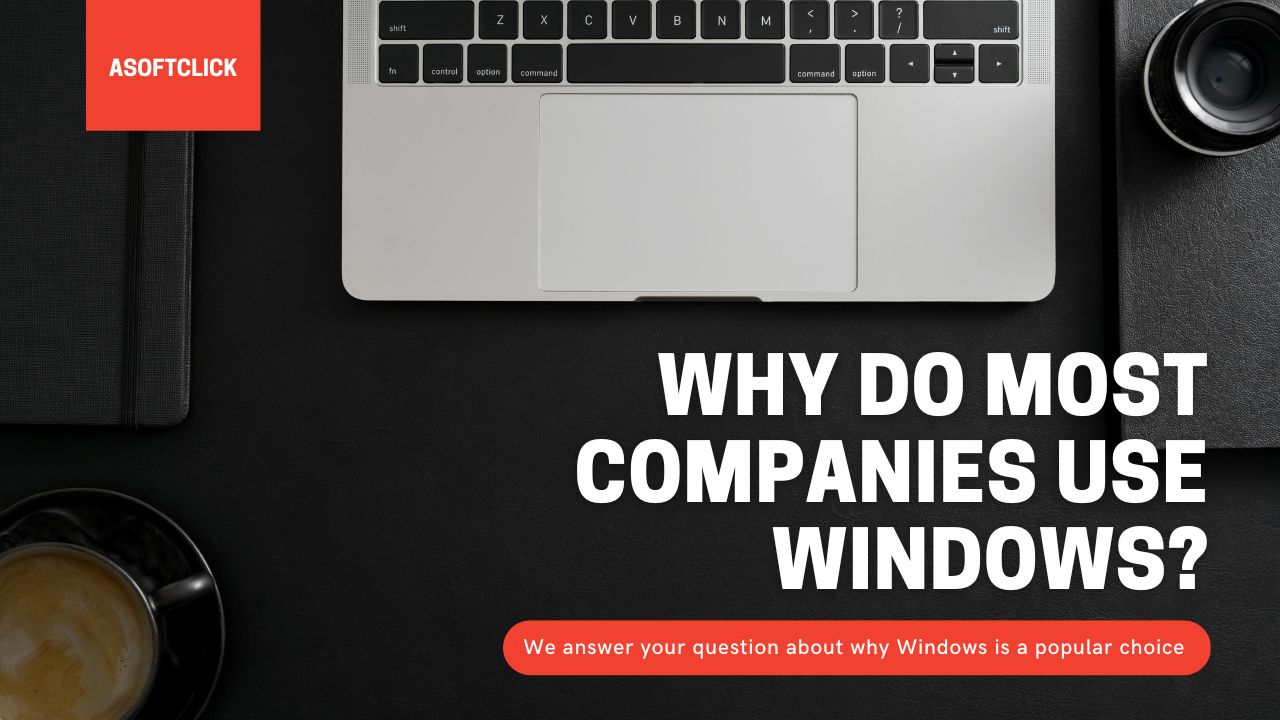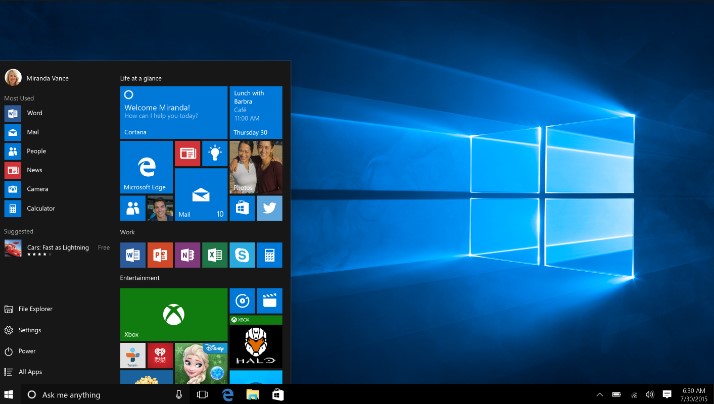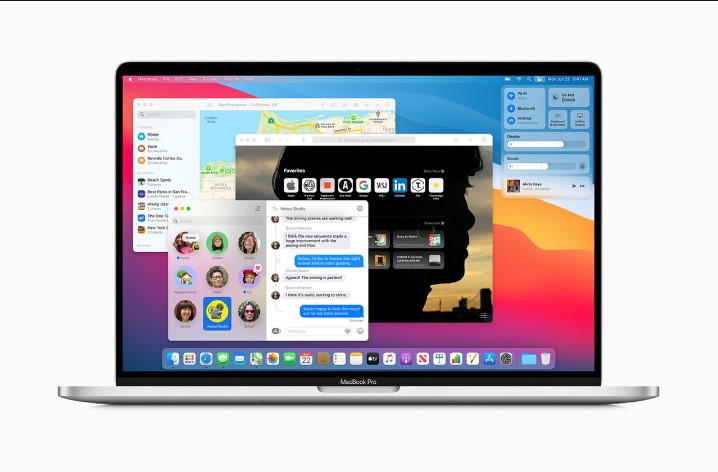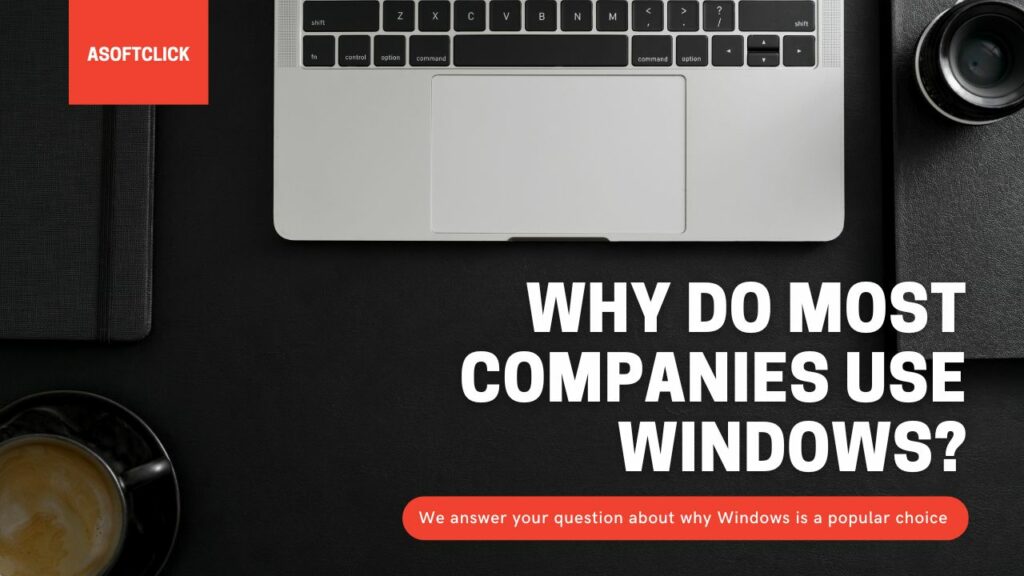 In operating systems (OS), Windows is a dominant force, particularly in the corporate world. The question that arises is, why do most companies use Windows as their preferred OS? In this article, we’ll discuss the factors that make Windows the go-to choice for businesses, its advantages, and why alternatives like Macs are less prevalent in enterprise settings.
In operating systems (OS), Windows is a dominant force, particularly in the corporate world. The question that arises is, why do most companies use Windows as their preferred OS? In this article, we’ll discuss the factors that make Windows the go-to choice for businesses, its advantages, and why alternatives like Macs are less prevalent in enterprise settings.
What is an Operating System?
Before we dive into the reasons behind the widespread adoption of Windows, let’s clarify what an operating system is. In computing, an operating system is system software that manages computer hardware, and software resources, and provides various services for computer programs. It is an intermediary between the computer hardware and the applications running on it. Without an operating system, a computer would be virtually unusable, as it controls and coordinates hardware components like the central processing unit (CPU), memory, storage devices, and peripherals.
Operating systems come in various forms, including Windows, macOS, Linux, Unix, and more. They play a pivotal role in enabling users to interact with and utilize the capabilities of a computer or other devices.
Why Do Companies Use an Operating System?

Companies use operating systems as the foundational software that runs on their computer hardware, facilitating various tasks such as data processing, file management, user interfaces, and software execution. An OS offers a set of essential functions that empower businesses to use their computing resources efficiently. These functions include:
- Hardware Abstraction: An operating system abstracts the complex hardware interactions, providing a consistent interface for software applications. This abstraction simplifies application development by shielding programmers from the intricacies of low-level hardware.
- Resource Management: OSs manage hardware resources like memory, central processing units (CPUs), and input/output devices. They allocate these resources to running applications, ensuring fair and efficient resource sharing.
- User Interface: Many operating systems offer graphical user interfaces (GUIs) that enable businesses to create software with user-friendly interfaces. These GUIs simplify the development of applications with visual elements, buttons, and windows.
- Security: Operating systems include security features such as user access controls, authentication, and encryption. These features are crucial for safeguarding company data and applications.
- File System: The OS provides a file system for organizing and storing data. It allows businesses to create, read, write, and delete files, which is a fundamental aspect of data management.
- Process Management: OSs support the creation and management of processes, which are independent execution units. Businesses can write software that runs as separate processes, benefiting from concurrency and multitasking capabilities.
- Networking: Operating systems provide networking capabilities, allowing businesses to connect their computers and devices, share resources, and access the internet.
- Printing and External Devices: OSs manage the connection and interaction with external devices, including printers, scanners, and peripherals.
You might also like: Top 5 Best OS for Software Developers in 2023
Things to Look for in an Operating System
When companies are selecting an operating system, several key factors come into play. These considerations help businesses make informed decisions about the OS that best suits their needs. Some essential aspects to consider include:
- User-Friendly Interface: An OS should offer an intuitive and user-friendly interface to enhance productivity and ease of use for employees.
- Compatibility: It should be compatible with the existing hardware and software infrastructure of the company.
- Security: Security features and updates are critical for safeguarding business data and systems from threats and vulnerabilities.
- Enterprise Features: A business-focused OS should provide enterprise-level features such as centralized management, group policies, and security controls.
- Software Ecosystem: An OS should have a rich and diverse software ecosystem, ensuring that businesses can find the applications they need for their operations.
- Integration: The OS should seamlessly integrate with other business systems, applications, and cloud services.
- Customization: It should allow for customization to tailor the OS to the specific needs of the company.
- Technical Support: The availability of technical support, updates, and patches is crucial for maintaining a stable and secure computing environment.
- Scalability: The OS should be able to scale as the company grows and its requirements change.
Now, let’s explore why Windows stands out as the operating system of choice for a vast number of companies.
Why Do Most Companies Use Windows?

- User-Friendly Interface: Windows OS is renowned for its user-friendly interface. It provides an environment that is familiar to a vast number of users, reducing the learning curve for employees. The Start menu, taskbar, and file explorer are intuitive and make it easy to navigate the system.
- Compatibility: Windows is designed to work with a wide range of hardware and software. This compatibility extends to both legacy systems and modern devices, ensuring that businesses can continue to use their existing technology investments.
- Enterprise Features: Windows offers robust enterprise-level features through its various editions, such as Windows 10 Pro and Windows 10 Enterprise. These editions provide advanced management capabilities, security features, and compatibility with business software.
- Security: Windows has made significant strides in enhancing security with features like Windows Defender Antivirus, Windows Defender SmartScreen, and BitLocker encryption. These tools help protect business data from malware and security threats.
- Software Ecosystem: Windows boasts an extensive software ecosystem. Businesses can access a vast library of business applications, productivity tools, and industry-specific software. This breadth of software options empowers companies to find the right tools for their operations.
- Integration: Windows integrates well with other Microsoft products and services, such as Office 365, SharePoint, and Azure. This integration creates a cohesive ecosystem that can streamline business processes and enhance productivity.
- Customization: Windows allows for extensive customization through group policies and scripts. This feature empowers IT administrators to configure the OS to meet the specific needs and security requirements of their organization.
- Technical Support: Microsoft provides robust technical support, including regular updates, patches, and troubleshooting assistance. This support helps companies maintain a stable and secure computing environment.
- Scalability: Windows is designed to scale with a business as it grows. It can accommodate a small business with a handful of computers as well as large enterprises with thousands of devices.
Case Studies
To better understand the practical applications of Windows in the corporate world, let’s explore a few case studies of businesses that have successfully integrated Windows into their operations:
Case Study 1: A Medium-Sized Retail Chain
A medium-sized retail chain with multiple locations requires a reliable and scalable operating system to manage point-of-sale (POS) systems, inventory, and customer data. They chose Windows due to its compatibility with their existing software and the ability to customize their POS system. With Windows, they successfully streamlined their operations and ensured consistent and secure transactions across all their stores.
Case Study 2: A Global Manufacturing Company
A global manufacturing company needed an OS that could support its complex supply chain, data analytics, and collaborative design processes. Windows, with its enterprise features, security, and integration with Microsoft’s productivity suite, proved to be the ideal choice. This allowed the company to enhance collaboration and data management across its various locations and teams.
Case Study 3: A Start-Up Tech Firm
A start-up tech firm chose Windows as its operating system to provide a familiar environment for its employees and attract talent with prior Windows experience. They appreciated the scalability of Windows, knowing they could grow their workforce without switching to a different OS. This decision enabled them to focus on building innovative solutions without the complexity of a new operating system.
Why Are Macs Rarely Used in Business/Enterprise?

While Windows is the dominant operating system in the business and enterprise sectors, Macs are less prevalent for several reasons:
- Cost: Mac hardware is generally more expensive than its Windows counterparts. This cost can be a significant factor for businesses, especially small and medium-sized enterprises (SMEs) working within tight budgets.
- Compatibility: While Macs are known for their compatibility with creative and design applications, they may face challenges in integrating with certain business-critical software or services that are designed primarily for Windows.
- Enterprise Features: Windows offers enterprise editions specifically designed to meet the demands of corporate environments. These editions provide features like group policies, Active Directory integration, and remote desktop services that are essential for business operations.
- IT Administration: Many IT departments are well-versed in managing Windows systems. Shifting to Macs would require additional training and potentially an overhaul of existing IT infrastructure.
- Software Ecosystem: Windows boasts a vast software ecosystem with a wide array of business applications, while the Mac ecosystem is more focused on creative and design tools. For businesses, the breadth of software options available on Windows can be a deciding factor.
- Customization: Windows allows for extensive customization and fine-grained control through group policies. This level of customization is critical for IT administrators managing security, compliance, and business-specific requirements.
- Technical Support: Microsoft provides comprehensive technical support and regular updates for Windows, which is crucial for maintaining a secure and stable computing environment. While Apple offers support for macOS, it may not align with the specific needs of businesses.
You might also like: Can You Install Windows 7 on Multiple Computers?
The Evolution of Windows in Business

Understanding the evolution of Windows as an operating system helps shed light on why it’s the preferred choice for businesses. Windows has undergone several significant transformations, and each iteration brought new features and improvements tailored to the needs of users and enterprises. Here, we’ll briefly highlight some key Windows versions and their impact on the business world.
Windows 3.1 and the Graphical User Interface (GUI)
Released in 1992, Windows 3.1 was a pivotal release for Microsoft. It introduced the graphical user interface (GUI) to the Windows OS, making it more accessible and user-friendly. The GUI allowed users to interact with their computers in a more intuitive way, which was particularly advantageous for businesses. It set the stage for future Windows versions to further enhance user experience.
Windows 95: The Start Menu and Plug-and-Play
Windows 95, launched in 1995, is remembered for introducing the iconic Start menu and Plug-and-Play technology. The Start menu revolutionized how users accessed programs and files, enhancing efficiency. The introduction of Plug-and-Play simplified the installation of hardware devices, making it easier for businesses to manage their computing infrastructure.
Windows XP and Enhanced Security
Windows XP, released in 2001, was a game-changer for businesses, thanks to its enhanced security features. It introduced the Windows Firewall, offering protection against network threats. Additionally, it included the Windows Security Center, giving users better control over their system’s security settings. Windows XP’s stability and performance made it a popular choice for enterprises.
Windows 7 and Enterprise Features
Released in 2009, Windows 7 continued to build on the success of previous versions. It introduced enterprise-focused features such as BitLocker encryption and DirectAccess for secure remote access. These enhancements were vital for businesses looking to secure their data and enable remote work.
Windows 10: A Unified Platform
Windows 10, launched in 2015, was a significant step forward in unifying the Windows ecosystem. It introduced a single OS platform for various device types, including desktops, laptops, tablets, and smartphones. This versatility was appealing to businesses that sought a unified platform to manage their diverse computing needs.
Windows 11: The Latest Advancements
Windows 11, the latest major release at the time of writing, brings further improvements to the user experience. It features a redesigned Start menu, new multitasking capabilities, and enhanced gaming performance. Windows 11 continues to prioritize security, productivity, and seamless integration with Microsoft’s cloud services, which are essential for modern businesses.
You might also like: Top 16 Essential Windows Apps and Software for Your New PC
Conclusion: Why Do Most Companies Use Windows?
In conclusion, Windows is the operating system of choice for a multitude of companies due to its user-friendly interface, compatibility, enterprise features, security, software ecosystem, integration capabilities, customization options, technical support, and scalability. These advantages make Windows the preferred OS for businesses, whether they are small start-ups or large enterprises.
While Macs have made inroads into business and enterprise environments, they are still less prevalent due to factors like cost, compatibility, enterprise features, IT administration considerations, and the broader software ecosystem provided by Windows.
The choice of operating system ultimately depends on a company’s specific needs, existing infrastructure, and budget. For many, the balance of features and support offered by Windows makes it the optimal choice for running their business operations efficiently and securely. As technology continues to evolve, businesses should regularly assess their OS choices to ensure they align with their strategic goals and IT requirements.





